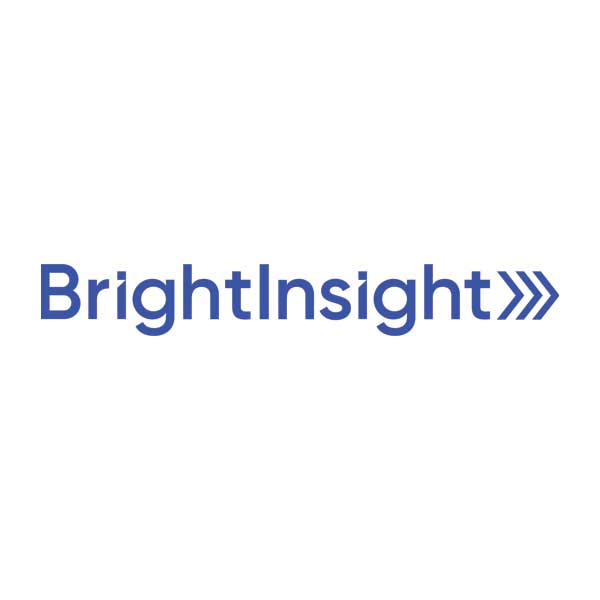How Generative AI Impacts the Business of Healthcare

By Kal Patel, MD, MBA, CEO and Co-Founder, BrightInsight
The Future Healthcare Journal notes that AI in healthcare “continues to accelerate rapidly, with potential use cases being demonstrated across the healthcare sector including drug discovery, virtual clinical consultation, disease diagnosis, prognosis, medication management and health monitoring.” Coming out of the 2024 JP Morgan Healthcare Conference (JPM), it’s evident that AI will continue being a hot topic for 2024.
During JPM, I discussed the impact of generative AI in healthcare with Amar Goel, co-founder and CEO of Bito, a game-changing productivity tool for developers that accelerates software development using AI models, and Dr. Theodore Leng, a world leading innovator in the field of medical and surgical retina who serves the Department of Ophthalmology at Stanford University as both the Director of Clinical and Translational Research and the Director of Ophthalmic Diagnostics. Hearing their perspectives helped expand my own understanding of the opportunity AI brings.
AI as a State of Mind
Many in healthcare have been cautious about embracing the latest digital innovations and AI takes that concern up a level. AI involves a learning curve and changes how you work – regardless of industry. Amar shared an anecdote about how his son, when hitting a snag in developing code, instinctively uses ChatGPT to find and correct the issue instead of thinking out a solution.
Generative AI can read code and test it significantly faster, making what used to take days now happen in minutes. In fact, software developers may be 10-20 times more efficient over the next five years. It’s easy to experiment with generative AI, although clinical applications require near perfect consistency and accuracy.
AI programs must be reliable, repeatable, cost effective and fit within a current workflow -- that is the hard part and will take focus and possibly a partner. Some best practices are emerging for selecting the right technology startup partner, including:
- Identify and prioritize your organization’s AI use cases
- Test AI initiatives in areas of clear in-house technical and required domain expertise
- Work with a partner who is strong in areas where you are not
- Examine the potential partner’s management team, customers, flagship programs. Many companies are rebranding to claim AI expertise, but how deep does it go?
As noted by Dr. Leng, many AI initiatives at Stanford are being driven by passionate physician champions, who then get their medical center’s IT teams involved before rolling them out.
Generative AI’s Impact in Healthcare
About 30% of the world’s data is currently being generated by healthcare, offering tremendous insights when analyzed correctly. This amount is cumbersome to sift through meaningfully without AI assisting. Improving efficiencies will be a key focus for AI in the early days, centering on making patient care more effective, safe and efficient.
Further, email volume from patients now is five times what it was a few years ago and Stanford receives over one million messages per year, placing a substantial burden on care teams. The health system is piloting ChatGPT for generating draft responses. Clinicians can use, edit or scrap the content, and this resource is improving clinician satisfaction. Another potential use leverages AI with ambient voice to help type notes from a clinical encounter into the EHR.
In drug discovery and development, clinicians must learn how to use generative AI like using clinical trial data to help guide the decision-making process. Analyzing retinal images in clinical trials to identify biomarkers for disease progression, for example, can give an earlier signal if a treatment is working.
Bringing a Platform Approach to AI
At BrightInsight, we work with biopharma clients to address several disease states. One of our partners, Woebot Health, has built an “empathy engine” that uses its ability to learn to develop a lasting and sympathetic relationship with the patient and can be embedded in the apps built with BrightInsight’s Disease Management Solution. Consider patients with needle phobia, which affects virtually all medical procedures and an estimated 63.2% of patients, leading nearly half to avoid blood draws and donating blood, and one-third to skip vaccinations. Many treatments now are self-infused at home, requiring the person to overcome their fear of needles to receive the medication.
Woebot’s empathy engine helps patients explore and overcome their needle phobia by establishing a sympathetic and understanding relationship as a prelude to a therapeutic tool. The BrightInsight Platform enables Woebot to introduce conversational AI tools for those patients to improve their quality of life, helping them overcome needle anxiety, and aiding them onto a therapy, and off of it as their condition improves.
A secure platform for compliant digital health solutions, like BrightInsight’s Platform, can provide the framework and capabilities to support the deployment and execution of AI initiatives. It’s designed to take in data from a variety of sources, including devices, EHR systems, and more, and run these sets through any algorithm. Because it’s modular, flexible and scalable, the algorithm can be easily and frequently updated as it learns and changes, keeping it relevant as requirements evolve.
As applications of AI continue growing, the question of job replacement comes up. As Dr. Leng shared, while technology won’t replace people, doctors who use AI will replace doctors who don’t use AI – it will be like any other tool, such as a stethoscope or ultrasound, we have to adapt.
Dr. Kal Patel is the CEO and Co-Founder of BrightInsight, the leading global regulated Digital Health platform for biopharma and medical device companies.
The views and opinions expressed herein are the views and opinions of the author and do not necessarily reflect those of Nasdaq, Inc.
